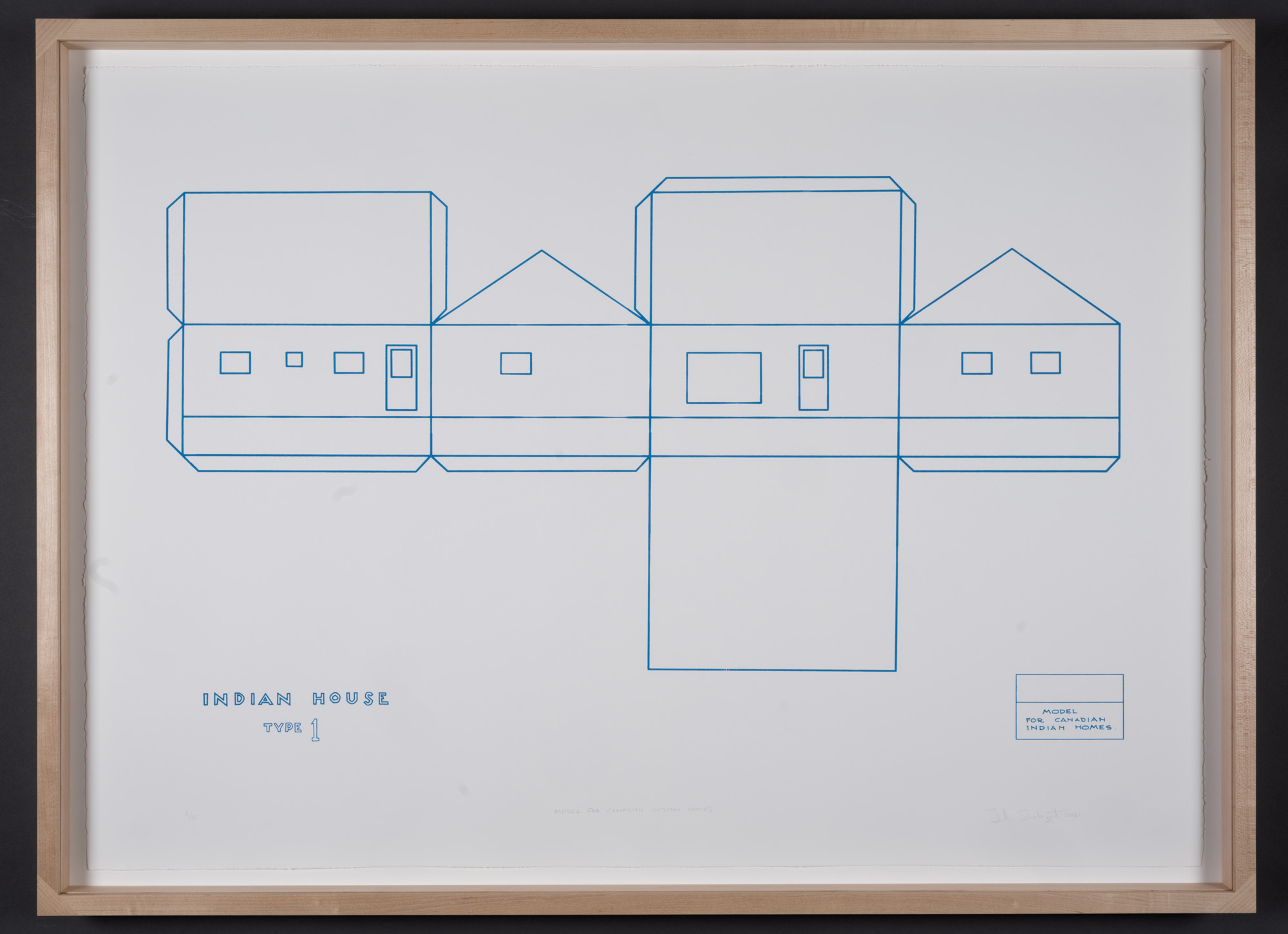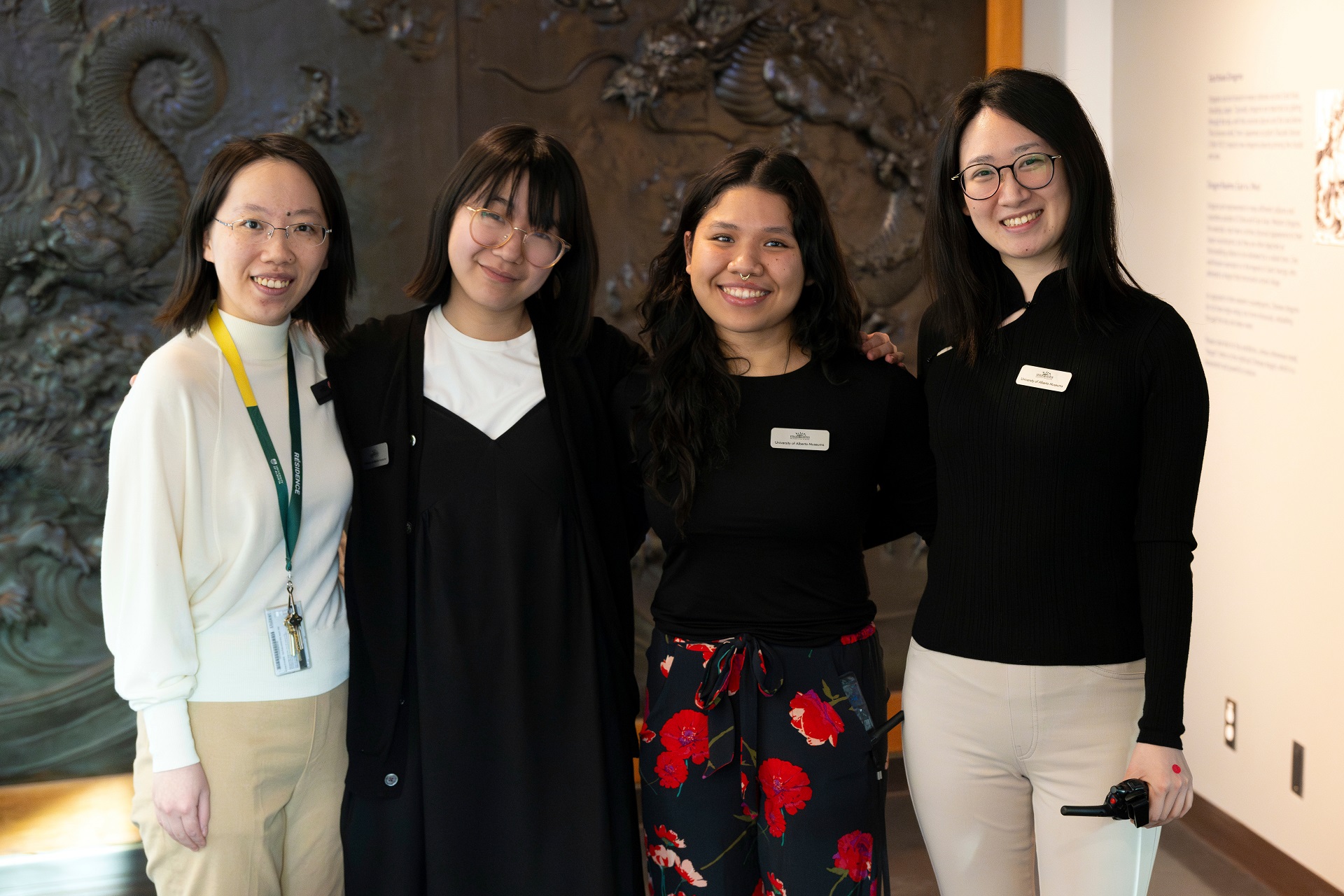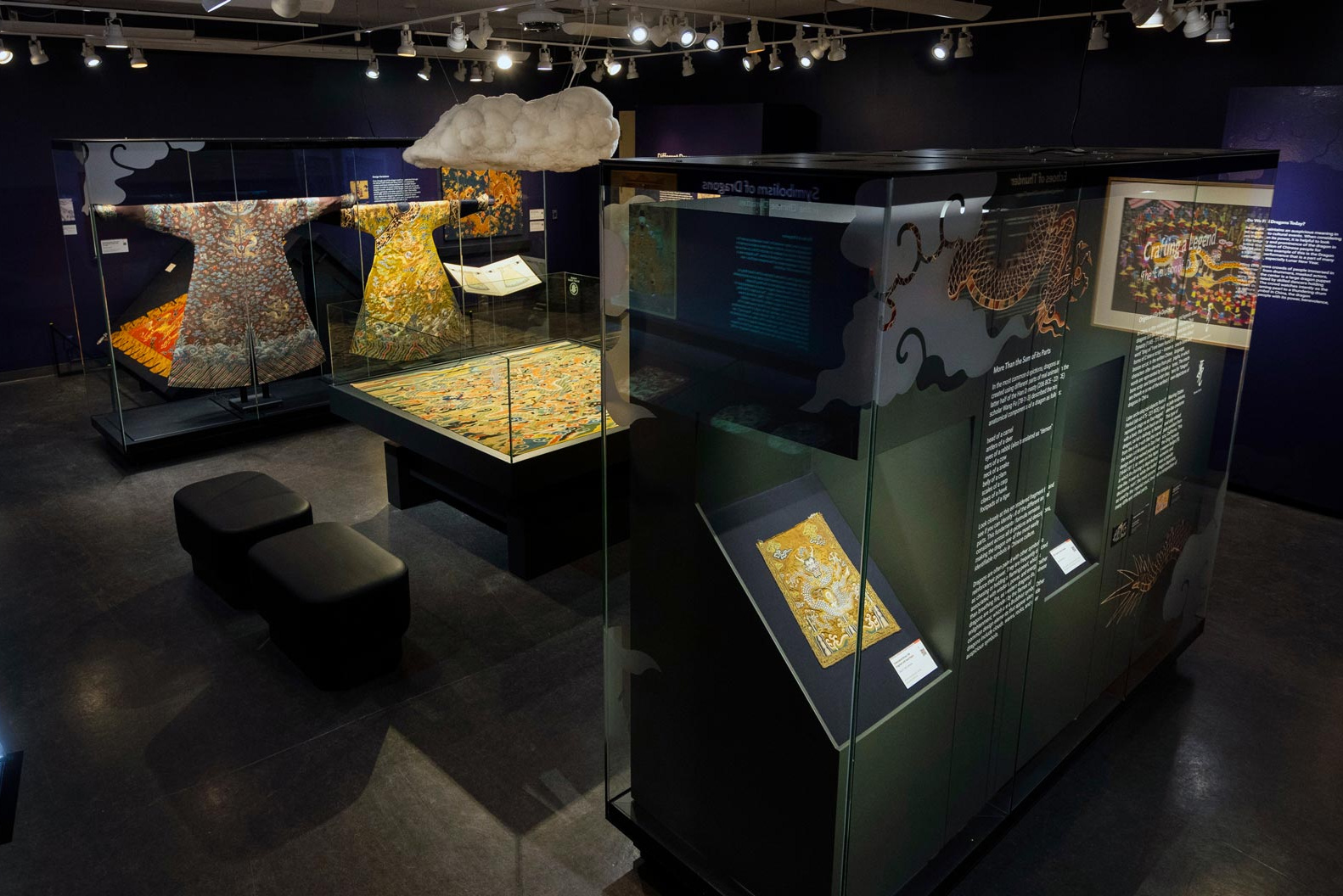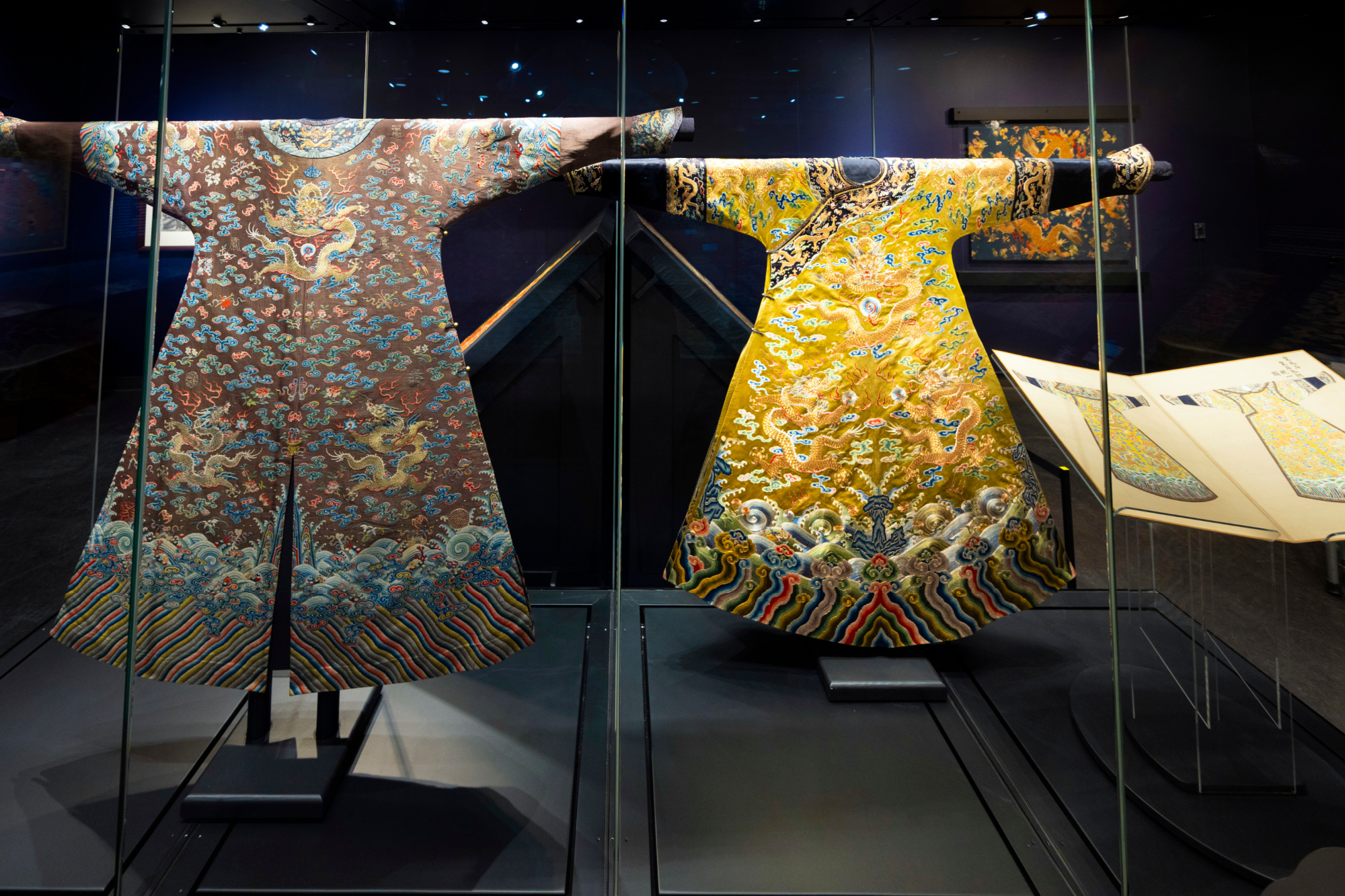Art In Focus: “Laughing Monarchs” by Charles Pachter
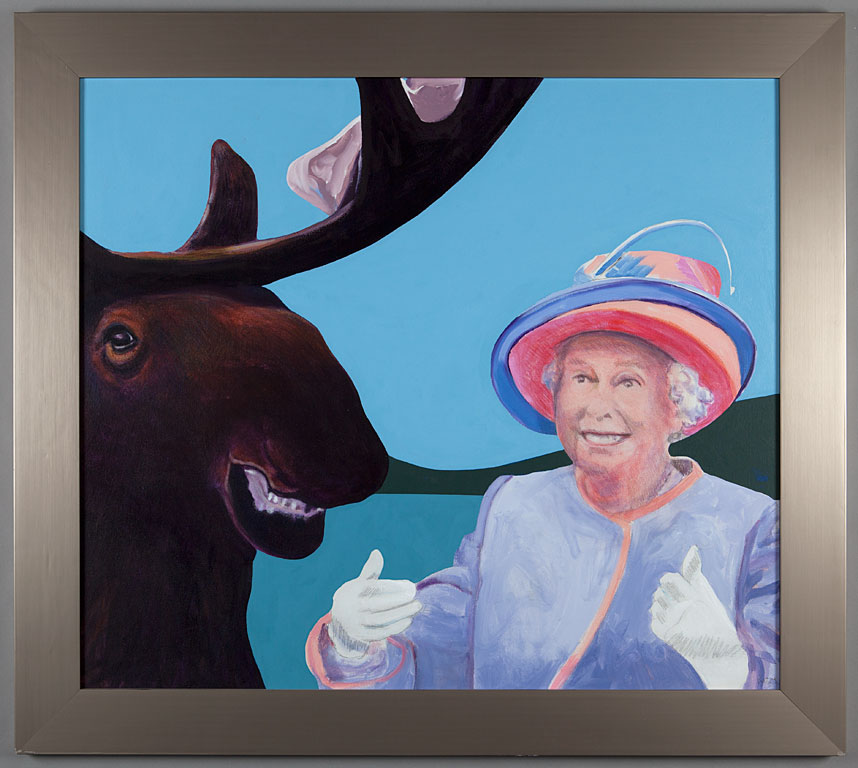
Laughing Monarchs, 2008, Charles Pachter (b.1942); University of Alberta Museums Art Collection; Gift of the Artist; 2013.5.7
In Charles Pachter’s 2008 painting titled Laughing Monarchs (2013.5.7), Her Majesty Queen Elizabeth II laughs alongside a smiling moose. The piece from the University of Alberta Museums Art Collection features imagery that has become iconic to Pachter’s career, with both the Queen and moose having been his favourite icons for decades. The self-proclaimed “Canadian Andy Warhol”1 draws inspiration from the pop artists of his youth, including Willem de Kooning, Jackson Pollock, and Mark Rothko.2 He refers to his pop-art like style as Reductionist Symbolism,3 in which he tries to reduce an idea to its essence. He uses this style to explore the theme of Canadian identity in a “clear and humorous way”4, painting many iconic symbols, including moose, the Queen, butter tarts, and the Canadian flag.
Pachter first painted Her Majesty Queen Elizabeth II in 1972 in a work originally titled Noblesse Oblige, which depicts the Queen riding on a moose. Having been taught that the moose was the “monarch of the North”5, Pachter had the idea to combine Canada’s monarchs together in one work. He has since stated that this painting was his way of making sense of the evolving nature of Canada as a country from a colony to nation.6
Due to the potentially offensive depiction of Queen Elizabeth in Noblesse Oblige, Pachter's dealer refused to allow him to exhibit the painting publicly.7 Pachter then decided to exhibit it himself in 1973 in a show titled "The Other Shaw Festival" as a nod to the Shaw Festival the Queen was scheduled to inaugurate in the same year.8 One of Pachter's friends even acted as Queen Elizabeth II, waving from a convertible outside the exhibit, emphasizing Pachter’s satirization of the monarch.9 Although he garnered criticism for his views of the British monarchy when the painting was successfully displayed in “The Other Shaw Festival”, Pachter affirms that the piece is simply “affectionate mischief”10.11 He soon became well-known for the image due to the controversies surrounding Noblesse Oblige. Pachter has since painted over 50 works of Queen Elizabeth II, occasionally alongside a moose.
Her Majesty Queen Elizabeth II passed away on September 8, 2022, at the age of 96. She served as Queen of Canada for nearly half the country’s existence. When asked about upcoming projects following the death of Her Majesty, Pachter said that he has already produced a work of King Charles III.13 The painting, titled Monarchs of the North, depicts King Charles III sitting next to a moose, both sporting the Crown Jewels of the United Kingdom. According to Pachter, this portrayal will not have the same impact as Noblesse Oblige since this imagery does not share the same historical significance as images of women with animals. Pachter argued that the pairing of women with beasts/non-human animals in artworks has a “historical precedent”14 in art history, and offered the example of Leda and the Swan, the myth of which is “one of the most enduring subjects in art, religion, and literary creation in history”15.
Whether coincidental or intentional, Pachter’s works of Queen Elizabeth II and a moose tap into a historic theme crossing centuries of artistic achievement. The death of Queen Elizabeth II raises an important question for Pachter’s future works: how does an artist adapt to the loss of one of their most iconic figures? Having already stated that works of King Charles III alongside a moose will have a lesser impact, Pachter’s iconography may go through a drastic change as the Commonwealth deals with the aftermath of the passing of its longest reigning monarch.
Learn more about Charles Pachter, and explore his works in the University of Alberta Museums Art Collection.
1 Tyler Evans, “Renowned artist shares fond memories of painting, meeting Queen,” New Market Today, September 8, 2022, https://www.newmarkettoday.ca/local-news/renowned-artist-shares-fond-memories-of-painting-meeting-queen-5798093.
2 Radhika Panjwani, “Q&A with Charles Pachter at Peel Art Gallery, Museum and Archives,” Brampton Guardian, March 30, 2017, https://www.bramptonguardian.com/things-to-do/q-a-with-charles-pachter-at-peel-art-gallery-museum-and-archives/article_f2ba568a-0e7e-5d73-9144-71e8b540f078.html.
3 Charles Pachter, “Thoughts on the war to end all wars,” Lest We Forget, accessed May 25, 2023, http://arts.lgontario.ca/lestweforget/essays/charles-pachter/.
4 Charles Pachter, “Mooseness: A Chat with Charles Pachter,” by Emily Chung, In 2 Print, (Spring 1998): 8, https://www.proquest.com/docview/208962805?parentSessionId=bT2SfOR76wY6CEULRQbcHh78VhUONBD0%2FWEj%2FVCYLaU%3D.
5 Jacques Gallant, “Queen on moose? We are amused,” Toronto Star, last modified February 25, 2015, https://www.thestar.com/news/gta/2015/02/23/queen-on-moose-we-are-amused.html.
6 Ibid.
7 Charles Pachter in discussion with the author, June 14, 2023.
8 Ibid.
9 Ibid.
10 Gallant, “Queen on moose.”
11 Evans, “Renowned artist shares fond memories.”
12 Ibid.
13 Charles Pachter in discussion with the author, June 14, 2023.
14 Ibid.
15 Shilong Tao, Anqi Peng, and Xi Chen, ““Being So Caught up”: Exploring Religious Projection and Ethical Appeal in Leda and the Swan,” Religions 12, no. 2 (2021), https://doi.org/10.3390/rel12020107.
